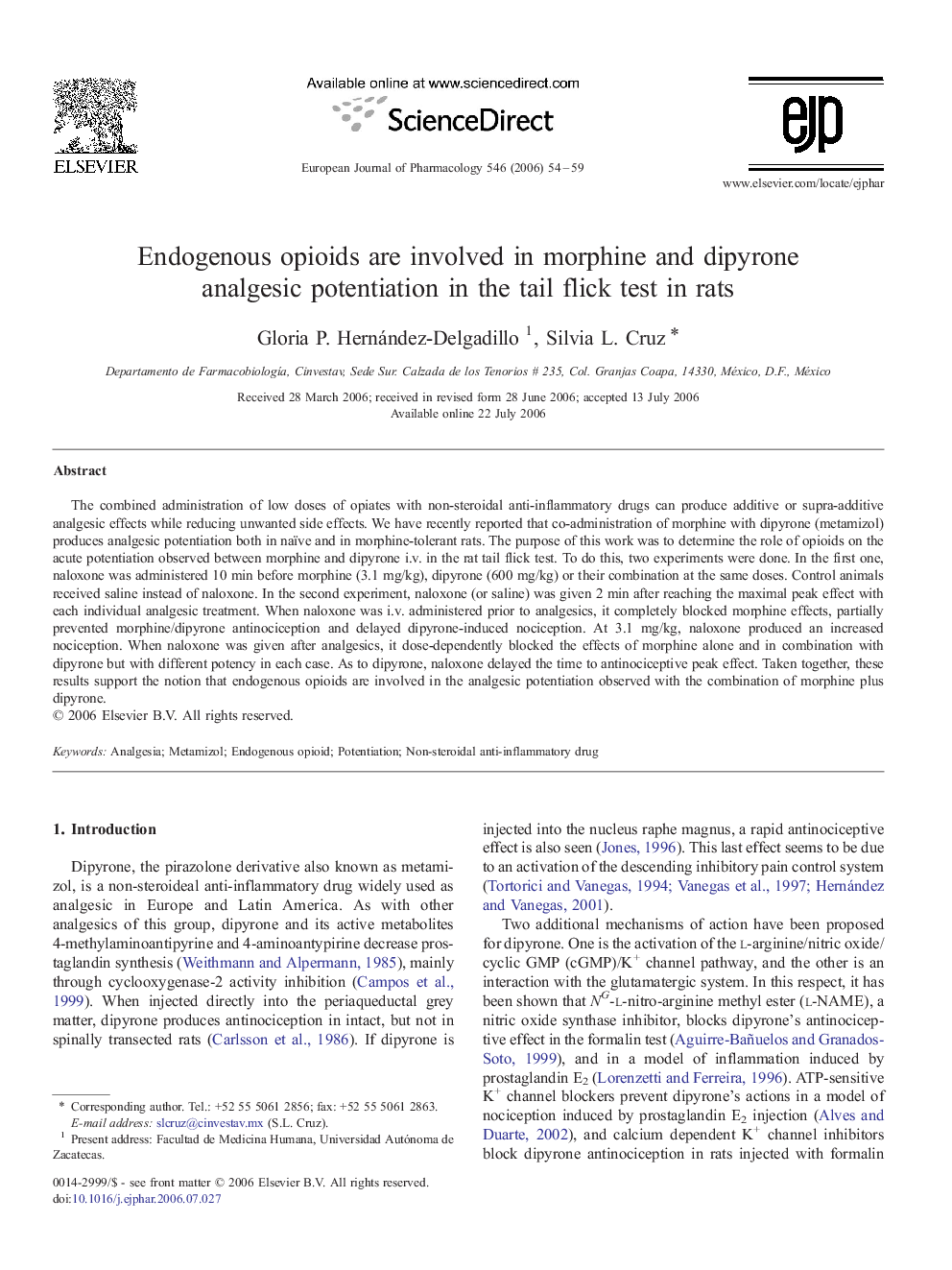| Article ID | Journal | Published Year | Pages | File Type |
|---|---|---|---|---|
| 2536945 | European Journal of Pharmacology | 2006 | 6 Pages |
The combined administration of low doses of opiates with non-steroidal anti-inflammatory drugs can produce additive or supra-additive analgesic effects while reducing unwanted side effects. We have recently reported that co-administration of morphine with dipyrone (metamizol) produces analgesic potentiation both in naïve and in morphine-tolerant rats. The purpose of this work was to determine the role of opioids on the acute potentiation observed between morphine and dipyrone i.v. in the rat tail flick test. To do this, two experiments were done. In the first one, naloxone was administered 10 min before morphine (3.1 mg/kg), dipyrone (600 mg/kg) or their combination at the same doses. Control animals received saline instead of naloxone. In the second experiment, naloxone (or saline) was given 2 min after reaching the maximal peak effect with each individual analgesic treatment. When naloxone was i.v. administered prior to analgesics, it completely blocked morphine effects, partially prevented morphine/dipyrone antinociception and delayed dipyrone-induced nociception. At 3.1 mg/kg, naloxone produced an increased nociception. When naloxone was given after analgesics, it dose-dependently blocked the effects of morphine alone and in combination with dipyrone but with different potency in each case. As to dipyrone, naloxone delayed the time to antinociceptive peak effect. Taken together, these results support the notion that endogenous opioids are involved in the analgesic potentiation observed with the combination of morphine plus dipyrone.
